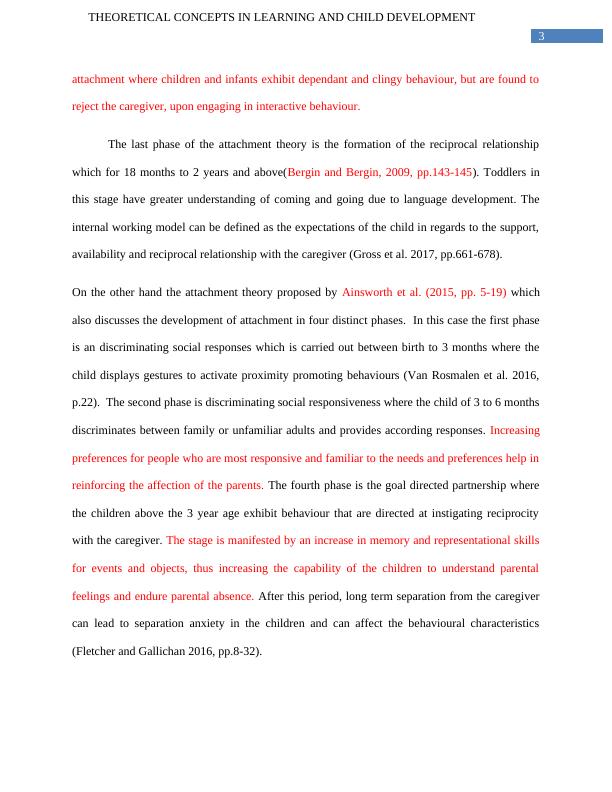Theoretical Concepts in Learning and Child Development: Attachment Theory
Write a formal essay addressing key concepts of chosen theory and their impact on children's learning and development, reflecting on pedagogy and analyzing application for Indigenous children or children with diverse needs.
16 Pages4777 Words195 Views
Added on 2023-06-04
About This Document
This essay explores the key concepts of attachment theory and its impact on the development and learning of children in secondary settings. It discusses the connection between attachment theory and pedagogy, and its impact on learning of indigenous children. The essay also highlights the strengths and limitations of the theory.
Theoretical Concepts in Learning and Child Development: Attachment Theory
Write a formal essay addressing key concepts of chosen theory and their impact on children's learning and development, reflecting on pedagogy and analyzing application for Indigenous children or children with diverse needs.
Added on 2023-06-04
ShareRelated Documents
End of preview
Want to access all the pages? Upload your documents or become a member.
Psychosocial Covering Essay 2022
|8
|2162
|19
Introduction to Cognitive and Developmental Psychology
|12
|1687
|399
Development Stage of Infancy
|6
|1646
|230
Study on Two Human Development Theories
|9
|2073
|497
Essay: Principles and application of attachment theory
|11
|1699
|353
Developmental Theories in Early Childhood
|14
|4085
|1




